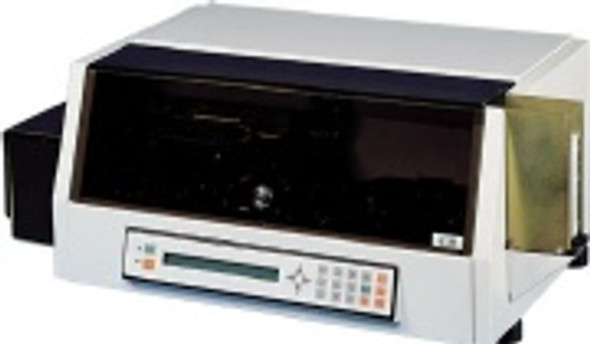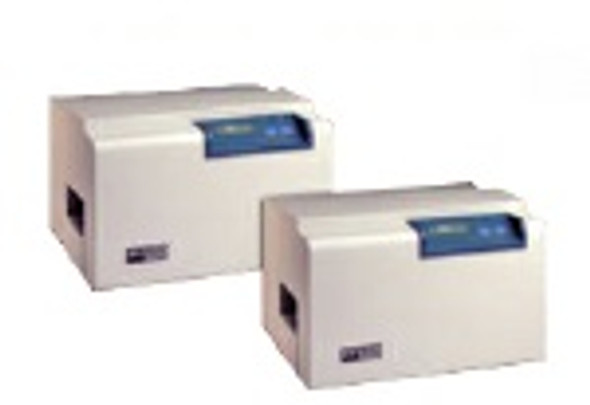Description
The Polaroid continued to improve its ID technology and in 1971 introduced the ID-3 product line, a range of smaller, more portable and less expensive systems that let smaller companies and organizations issue high-quality identification cards. The new system produced 125 ID cards per hour. is produced by Articles. Articles specalizes in developing high tech products. All ID Focuse on sourcing the most reliable products. This product was sourced by All ID because it is one of the top rated products from Articles.
Polaroid continued to improve its ID technology and in 1971 introduced the ID-3 product line, a range of smaller, more portable and less expensive systems that let smaller companies and organizations issue high-quality identification cards. The new system produced 125 ID cards per hour.
The ID-3 system fit into a compact suitcase-like carrying case that also functioned as its base while in use. The camera employed a light polarizing validation plate that offered additional security to the card making process. The plate optically separated the portrait and data image and the camera become inoperable without it. During the 18 years Polaroid distributed the ID-3 line it marketed 7 different models, including the 703/733 and the 710.
The sophisticated, electronically controlled ID-4 replaced the ID-3 in 1988. The ID-4, which remains Polaroid¿s most advanced all-photo ID system, incorporates an LED graphic control panel with indicator lights to signal the operator when each step has been completed and identifies the next step. The ID-4 has a built-in sonar range-finder as a focusing aid and produces 125 horizontal or vertical cards per hour in one of four film chip sizes: standard, ABA. Docutel and CR-80. Each system is equipped with one of three interchangeable data card holders, accommodating 3 1/4, 3 ½ or 4-inch high single or continuous form data cards.
Also introduced by Polaroid in 1988 was the ID-2000 Digital Security and Identification System, the first all-electronic identification system. Because the ID-2000 was capable of storing all data, including portraits, electronically, it had the ability to update and reissue identification cars without having the subject present
Prior to the ID-2000 launch a few manufactures had announced all-electronic identification systems, and some systems integrators had pieced together custom Id systems. However, the ID-2000 was the first fully integrated, purpose-built electronic ID system to go into full-scale production and distribution.
The ID-2000 utilized proprietary hardware, firmware and software, running on a standard MS-DOS computer, to combine digitized video portrait, subject signature and alphanumeric data with any of several preprogrammed, full-color card designs including such custom components as logos, seals and officer signatures. Completed cards could be previewed prior to printing or saving and individual portraits could be reviewed and retaken until the operator was satisfied with the results. Cards were printed centrally or delivered on-the-spot on Polaroid instant color print film exposed in a digital film recorder.
The ID-2000 was succeeded by the ID-3000 system in 1993. The ID-3000 features central issuance connectivity and a variety of over-the-counter output options, including digital film recorder, thermal printer and black-and-white laser dossier printing. Like its predecessor, the ID-3000 is a DOS-based system with an easy-to-use menu-driven interface. It has extensive custom programming and integration capabilities, making it the system of choice for high volume, high security government and private installations.
The ID-3000 is at the heart of Texas driver license program and the programs of other stats that have moved to all digital driver license ser printed on a Teslin substrate, encased in PolaSecure laminate and mailed to drivers within a week. Utilizing the latest image compression algorithms, the digital portraits on Texas license are considered to be equal to or better than, their all-photo predecessors.
In addition to capturing applicants portraits and biographical data, the Texas system also captures fingerprints and stores them in its central database: has the word ¿Texas¿ printed in ultraviolet ink beneath the front surface of the laminate; has a variety of other undisclosed security features to prevent counterfeiting and tampering; and has the driver¿s identification number recorded on a magnetic stripe on the back that can be read by any standard mag tripe reader.
Polaroid¿s electronic identification system, the ID-4000, has the same image quality and security capabilities of the ID-3000, and comes with a Microsoft Windows interface. The ID-4000 is intended for organizations that do not require custom programming and can use Polaroid¿s ¿off-the-shelf¿ security applications.
Since the introduction of the ID-3000, Polaroid has captured about half the state drivers license market in the United States and has an expanding presence in the worldwide national identification and voter ID market. In Mexico 45 million voter identification cards were issued from 6,900 card issuing locations in eight months; in Brazil a million Alien Identification Cards will be issued in the first 12 months. Many of these new customers have security and functional requirements not previously identified. Polaroid has responded with a variety of innovative features and technologies, all of which are available on a variety of computing platforms. They fall in to five categories¿ production security¿ system integration¿ visual security; invisible security¿ and card holder functionality.
To improve production security Polaroid created the Polaroid Security Card System 600, representing the state-of-the-art in fast, efficient, accurate and secure document processing, producing finished cards in 24 hours. The system also permits special handling of expedited orders.
The faculty utilizes ¿zero gaps¿ production accounting, in which all requested cards are produced, with the control system ensuring that none are lost or duplicated and that rejected cards are automatically remade. The system also checks for match between applicant images and data on the front and back of each card. It is virtually impossible for the wrong image to appear with wrong data.
To enhance system integration Polaroid systems follow the American Association of Motor Vehicle Administrators (AAMVA) standards for JPEG image compression. The standards permit the system to be easily installed an integrated with most existing networks and mainframe computers using established communications software and protocols
To facilitate the interchange of fingerprint files between state and federal government agencies, the captured digital image is compressed with a special algorithun approved by the FBI.
Fingerprint verification compares one set of fingerprints with another to authenticate a person¿s claimed identity. This system analyzes the fingerprint¿s minutiac data, such as the locations of ridge endings and intersections, and compares them against central database records or the data file represented by the2D barcode on the card.
Visual security is enhanced by the use of variable text, graphics locations and colors, making it easy for law enforcement personnel to identify the type of license and its restrictions, even in dim light situations. Unique or sequential numbering is also used to aid in production security and to make it harder to switch photo or biometric data.
Adding to features designed to inhibit duplication are overlapping images, ghost images, fine line printing and bank-note quality images. Ghost images, such as those on the Tennessee driver license, are smaller and lighter portrait duplicates, frequently with printing across them. Fine line printing and banknote-quality images exceed the resolving capabilities of most coping systems.
Card security is often bolstered by a strategy known as security chaining, in which as many as a dozen invisible security features are included on a single card, making it much harder to counterfeit the card.
To enhance card holder functionality, Polaroid-produced identification cards are capable of simultaneously carrying identifying data in photo, alphanumeric, magnetic, barcode and chip forms, permitting the cards to be used as identifying tokens for secure transactions.
For Disabled card holders in Georgia, a transparent graphic of the international wheelchair icon is printed on the face of the card. Organ donor authorizations, including donor and witness signatures, can also be printed on the back of the license to inform law enforcement and medical personnel of the holders¿ wishes in the event of a catastrophe.







